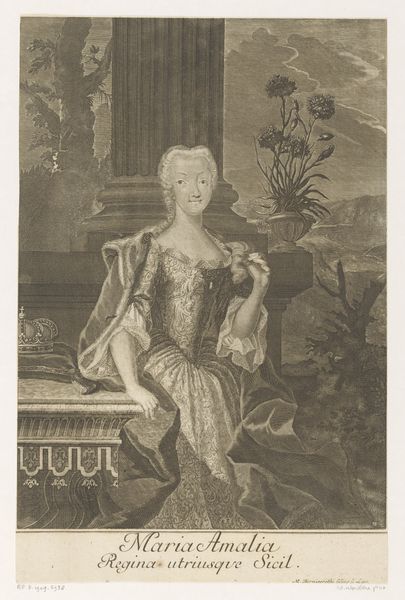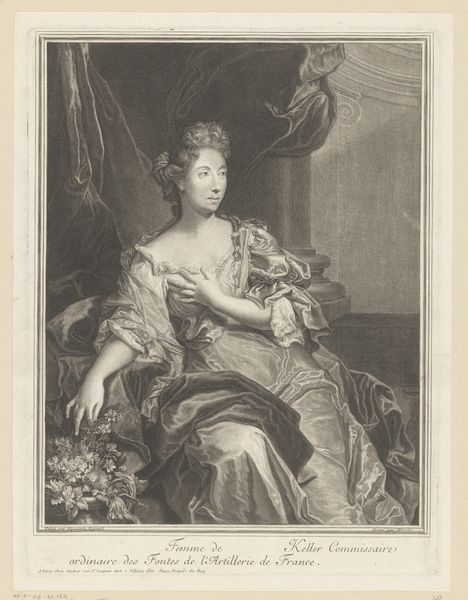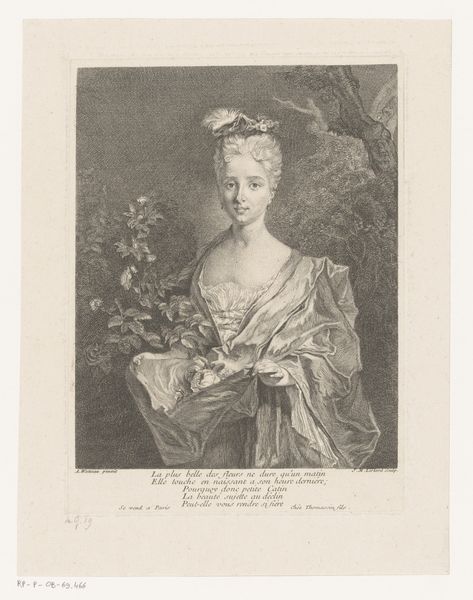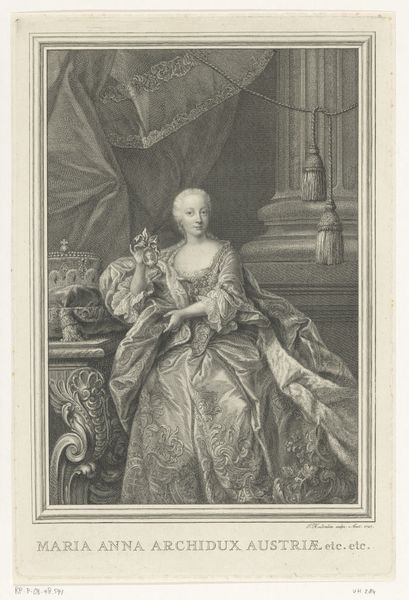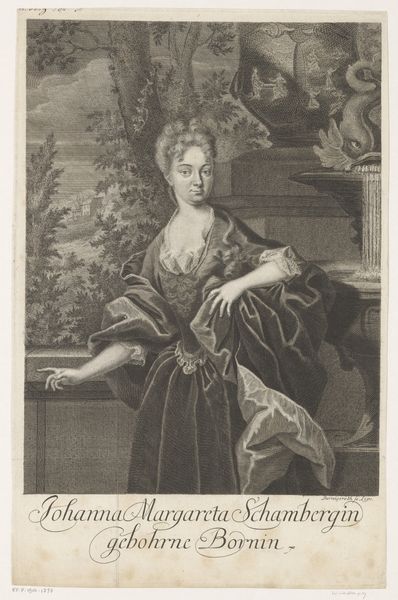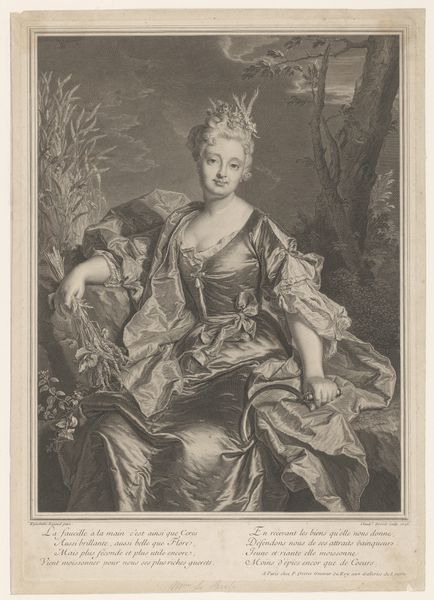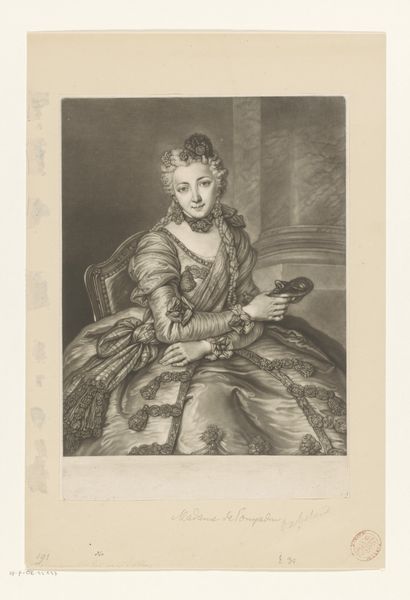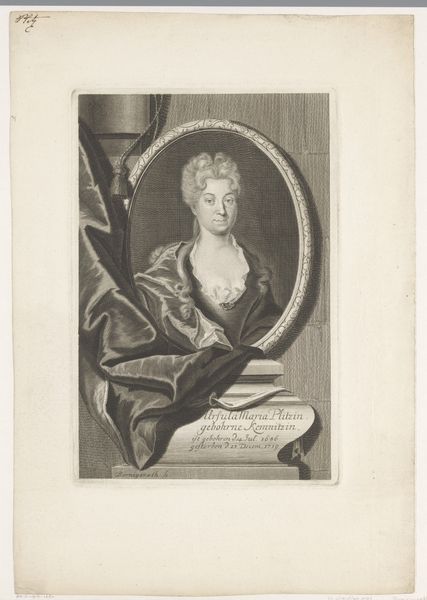
print, engraving
portrait
baroque
history-painting
engraving
Dimensions: height 345 mm, width 222 mm
Copyright: Rijks Museum: Open Domain
Curator: Martin Bernigeroth’s "Portret van Maria Rosina Trier" completed sometime between 1722 and 1733, presents a lovely Baroque figure through the sharp, elegant lines of engraving. First impressions? Editor: Utterly graceful—but there's this underlying stillness, a kind of solemnity despite all the lace and fancy backdrop. It feels…poignant. Curator: The use of engraving lends itself to capturing detail in fabrics, and that formal garden just visible behind her hints at Maria Rosina's status. But observe how Bernigeroth plays with line weight, almost like whispers in ink... Notice especially her garment's folds—soft curves against structured angles, contributing depth and texture? Editor: Yes! The gown tells a story itself. It’s not just luxurious, it’s theatrical—almost as if she is wearing a history, not simply fabric. What’s interesting is that it overwhelms her—she seems quite young—and her delicate expression is perhaps not as bold or assertive as one might expect from a person of status in Baroque art. Curator: True! Consider how the seemingly straightforward elements of portraiture get bent. This portrait adopts a structure emphasizing detail over dynamic, sweeping lines which contributes a feeling of reserve and introspection that runs subtly against the decorative elements we see framing her. Editor: Which adds layers. It asks, "Who is this person beyond the ornamentation? What is going on internally?" Even though we get so much opulent information, her gaze alone makes us consider who she is beyond. It creates intrigue, drawing us to discover her truth in those brief lines. Curator: Absolutely. The Baroque can often strike you as maximal and dramatic. Yet, this piece proves it has its share of quiet contemplation, realized through subtle detail. Editor: Ultimately, despite the period trappings, what sticks is the almost palpable, intimate gaze—it connects. A little echo from another time still speaking to our own.
Comments
No comments
Be the first to comment and join the conversation on the ultimate creative platform.
